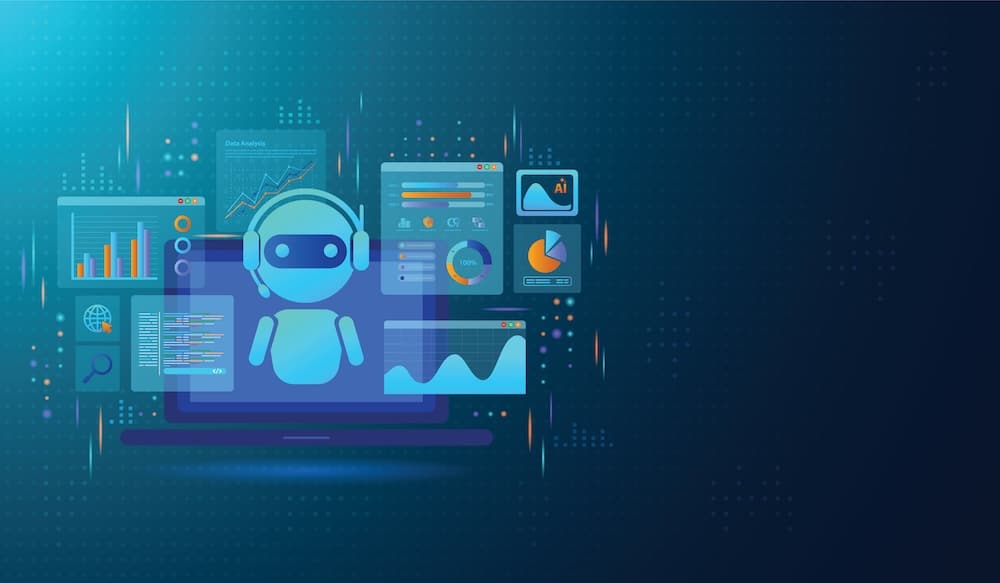Your AI agents work perfectly in testing, then fail when you deploy them across your organization. Without standardized communication protocols, AI agents require custom code to access business tools, coordinate with other agents, or work across organizational boundaries. Each integration requires patches with every system update.
Three protocols solve these integration challenges: Model Context Protocol (MCP), Agent Communication Protocol (ACP), and Agent-to-Agent Protocol (A2A). Understanding MCP meaning, ACP meaning, and A2A meaning helps you choose the right protocol for your specific integration needs and implementation strategy.
What Are MCP, ACP, and A2A?
AI agent protocols define how agents connect to tools, coordinate tasks, and share information across systems.
MCP: Model Context Protocol standardizes how AI agents connect to business tools and data sources through a universal interface, eliminating custom API development.
ACP: Agent Communication Protocol provides a REST-based framework for multiple AI agents to coordinate and collaborate within an organization.
A2A: Agent-to-Agent Protocol connects AI agents across different organizations, enabling secure cross-company workflows and partner integrations.
These protocols solve the digital fragmentation challenge that prevents AI agents from working together. Organizations typically use 371 SaaS applications on average, creating integration problems that slow AI deployment and limit what agents can do.
Understanding the difference between MCP, ACP, and A2A helps organizations choose the right approach for their AI integration needs. Each protocol handles different tasks, from internal tool access to agent teamwork to external partner workflows.
What Is Model Context Protocol (MCP)?
MCP creates a standard way for AI agents to connect to business tools and data sources without custom coding.
- Model Context Protocol allows for data connections to be defined for AI Agents and LLMs, standardizing how they interact with each other and simplifying the process of integrating AI functionality with business applications.
- MCP uses JSON-RPC 2.0 for communication between AI agents, Large Language Models (LLMs), and internal business APIs. Anthropic created the protocol, and major AI providers including OpenAI adopted it, making it the most widely used option today.
- Agents can interact with internal systems, such as fetching CRM data, querying databases, and searching for documents when composing responses. AI agents can pull customer records from Salesforce, query PostgreSQL databases, or retrieve files from SharePoint using the same standard interface.
- The Boomi Enterprise Platform added native MCP support in 2025, providing connections without custom development work. The strong ecosystem means ready-made connections exist for common business tools like Microsoft Office, Google Workspace, and popular CRM platforms.
MCP works best for companies that need AI agents to access existing business systems and external tools. Organizations with complex tool landscapes benefit most from the standardized connection approach.
Agent Communication Protocol (ACP) Explained
ACP uses a local-first approach that keeps data processing within company boundaries while providing better security control through familiar REST-based architecture.
- ACP connects easily with existing web infrastructure because it uses REST principles that developers already know.
- The local-first security model processes sensitive data within your company boundaries instead of sending it to external services.
- ACP’s stateless design removes common session management vulnerabilities found in other protocols.
- HTTP-based transport allows companies to apply standard web security measures and existing monitoring tools.
- ACP works best for internal agent coordination where data sovereignty and local processing matter for business compliance.
Implementation challenges include infrastructure investment and resource management for local deployment models. The smaller ecosystem compared to MCP means fewer ready-made integrations, but provides more predictable support and a stable development roadmap.
Agent-to-Agent Protocol (A2A) Explained
A2A handles secure cross-company agent workflows with business-grade security features, including agent discovery cards and task-based permissions.
- Google developed A2A with backing from over 50 technology companies, showing broad industry support for the standard.
- Business security features include agent cards for discovery, task-based permissions, and detailed audit trails. Agent cards work like business directories, helping organizations find and connect with partner agents safely.
- A2A was built for cross-company workflows like supply chain connections and multi-company customer service processes. Companies can automate order processing between suppliers, coordinate shipping updates, or handle customer questions that span multiple organizations.
- The protocol works with multiple authentication methods, including OAuth 2.0, API keys, and custom business identity systems.
- Cross-company capabilities create new business models through secure agent collaboration between organizations.
Implementation requires dedicated DevOps resources, legal review, and ongoing governance frameworks. Organizations need clear agreements about data sharing, liability, and operational responsibilities with external partners.
A2A is the newest protocol with fewer production examples, but it has the strongest industry backing for long-term business use.
Comparison: MCP vs ACP vs A2A
Choose MCP for tool access, ACP for internal coordination, and A2A for cross-organizational collaboration based on your business needs.
- Vendor backing and long-term viability: MCP offers the strongest vendor ecosystem with OpenAI, Microsoft, and Google DeepMind adoption, though it originated from Anthropic. ACP provides Linux Foundation with stable governance for open development. A2A benefits from Google’s 50+ enterprise technology partners but has complex implementation requirements.
- Technical implementation: MCP uses JSON-RPC protocol requiring specialized SDK knowledge while ACP uses familiar REST-based architecture that most developers already know. A2A requires enterprise-grade implementation with advanced authentication, streaming, and cross-organizational security features.
- Business applications: MCP works best when AI agents need to access existing business tools and external data sources. ACP fits internal agent coordination where data stays within company boundaries. A2A handles secure workflows between different organizations and business partners.
- Implementation complexity: MCP has the most ready-made connections and easiest setup for common business tools. ACP requires local infrastructure investment but uses familiar web technologies. A2A demands dedicated DevOps resources, legal review, and ongoing governance frameworks.
Each protocol addresses different integration challenges and may work together in comprehensive deployments. Organizations often need multiple protocols to handle the full range of AI agent use cases across internal operations and external partnerships.
Real-World Implementation Patterns
Enterprises use different combinations of protocols with clear boundaries between MCP for tools, ACP for internal coordination, and A2A for external partnerships.
- Start simple, then expand: Begin with one agent, one protocol, and one workflow before expanding to avoid complexity overload and debugging problems. Organizations that try to implement multiple protocols simultaneously face integration delays and troubleshooting challenges.
- Common implementation mistakes: Teams often ignore existing infrastructure, plan security poorly, and fail at data governance. These oversights create production issues that require expensive fixes and delay AI deployments.
- Connection reliability challenges: Connection failures are frequent production issues, especially with MCP’s JSON-RPC session handling complexity. Teams need robust retry logic and connection monitoring to maintain stable agent operations.
- Performance considerations: Each protocol creates different overhead, connection pooling requirements, and scaling challenges. MCP’s session management uses more resources than ACP’s stateless design, while A2A’s cryptographic signatures add processing overhead.
- Cloud-native deployment patterns: Modern deployments use containerization and service mesh for better resource management between protocol types. This approach provides consistent monitoring and scaling across different agent communication methods.
- API gateway integration: API gateway integration provides business-ready deployment by using existing security, monitoring, and traffic management infrastructure. Organizations avoid rebuilding security controls and can apply consistent policies across all protocols.
- Debugging approaches: Each protocol needs different debugging tools. MCP uses JSON-RPC debugging tools, ACP uses standard HTTP debugging methods, and A2A requires cross-organizational coordination for troubleshooting issues between partners.
Future of AI Agent Protocols
Industry expects protocol evolution and potential convergence as standards mature through real-world usage. Organizations should prepare for changes by building flexible architectures that can adapt to new standards without major rewrites.
- Future-proof architecture design: Use abstraction layers that isolate business logic from protocol details. This approach protects your AI agent investments when protocols change or new standards emerge. Companies that build directly on protocol features face costly migrations later.
- Avoiding vendor lock-in: Avoid deep integration with protocol features that would complicate future changes. Keep your agent logic separate from communication layers so you can swap protocols without rebuilding core functionality.
- Governance trend monitoring: Watch protocol governance trends to predict long-term viability. MCP has strong vendor adoption from major AI companies. ACP has Linux Foundation stability for open development. A2A has broad industry backing from enterprise technology partners.
- Protocol evolution planning: Build adapter patterns for translation between different communication standards. Organizations often need to support multiple protocols simultaneously, requiring translation layers that convert between MCP, ACP, and A2A communication methods.
Why Boomi Is the Best Solution for AI Agent Integration
With native MCP support announced in 2025, organizations can deploy Boomi AI agents with standard connections instead of building custom integrations for each protocol.
- Native MCP support announced in 2025 cuts out custom protocol development complexity and speeds implementation
- The Boomi Enterprise Platform’s cloud-native architecture supports protocol implementations through existing integration infrastructure
- Pre-built connectors provide foundation for protocol-based integrations without custom development or maintenance overhead
- Unified integration foundation works with current business systems regardless of protocol choice, protecting technology investments
- Platform approach addresses the digital fragmentation challenge that makes protocol adoption necessary for AI agent initiatives
Learn more about how AI agents are creating the next generation of intelligent integration with “How to Thrive in the Age of Agentic Transformation.”


 English
English 日本語
日本語